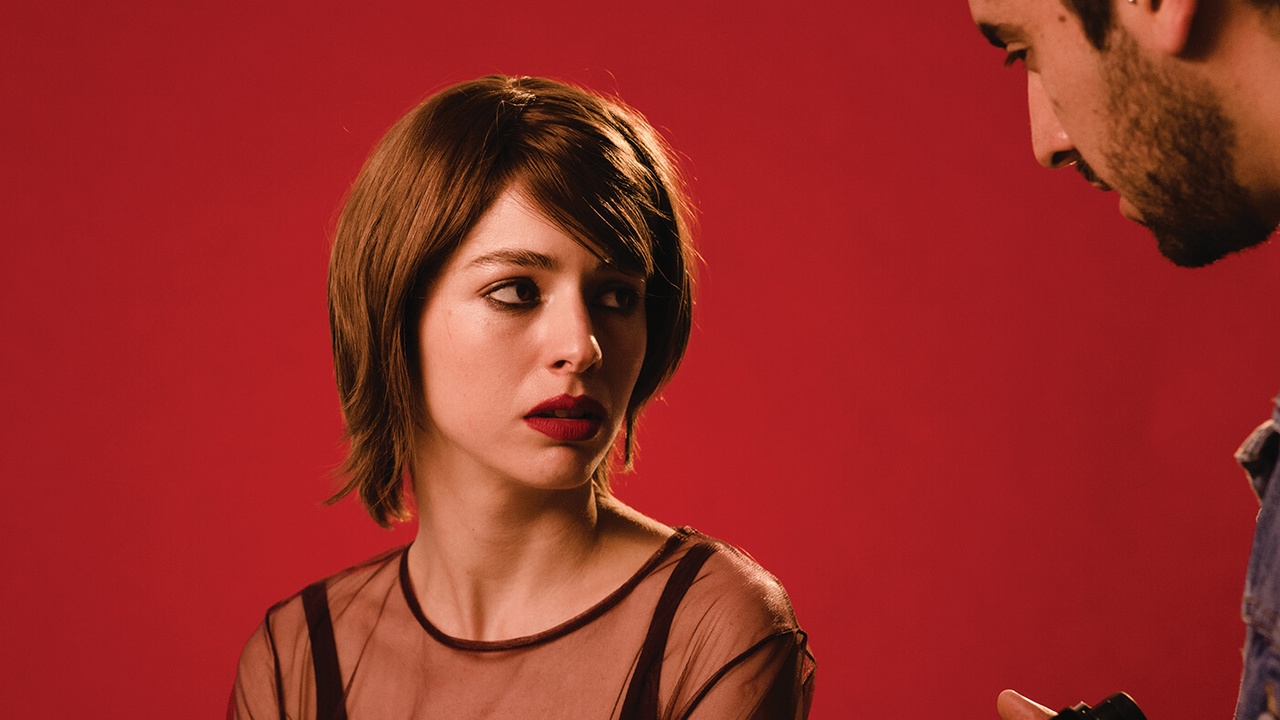La Verónica: The Dark Face of Instagram
in 42nd International Festival of the New LatinAmerican Cinema, Havana
With a tour that includes its presentation at the San Sebastián film festival and a subsequent streaming premiere on the Spanish platform Filmin, La Verónica (2020), by Chilean director Leonardo Medel (Constitución, 2016; Harem, 2017; Hotel Zentai, 2018), examines current, controversial issues that, in a certain way, he has examined throughout his career: the influence of virtual reality and social networks on the contemporary world, the omnipresence of the Internet in all aspects of daily life, and the figure of the influencer, always eager for followers—for whom he would not hesitate to kill, if necessary.
Almost always moving along the path of visual experimentation, Medel’s journey through these themes remains interesting insofar as he intends—and succeeds—at rendering La Verónica as the epitome of the convulsions of a contemporary social being bent between two worlds. The development of a dark face, the radical nude of the individual bound to the designs of Instagram or any social network, is the result of a critical attitude that protects the utilitarian character and the aesthetics of his new film.
Veronica, the protagonist, is an influencer married to a famous Chilean soccer player. She occupies the center of the universe, having developed the capacity to cultivate likes. In order to surpass one million followers, she will not hesitate to manipulate, deceive, and invent a rosary of virtues in social welfare and advertising campaigns, such as responding to the demands of beardless kids who long to see Vero’s lolitas on the air. However, when investigations into the death of her first daughter make Vero a homicide suspect, her marriage and reputation as an unblemished celebrity are in danger of collapse. Pitched between psychological drama and comedy, this film ends up convincing us of the weaknesses of a character that is itself an illusion, a beautiful face that constantly obscures its dark side before hiding it in the recycling bin.
The film’s best element is Medel’s own adjusted script, which prompts a risky staging. Pedro García’s photography uses the sequence shot as a visual strategy that dialogues methodically with the ideological content of the film. Within these shots, the statically positioned Vero occupies the center of the frame at all times; Vero’s mannered gestures, false poses, and beauty cast a veil over her inner world: hers is a ruthless, psychopathic, extremely crude narcissism, underpinned by the histrionic capacities of actor Mariana Di Girolamo.
Everything revolves around Vero: the visual ellipses, the background characters, often relegated to the margins or positioned with their backs to the camera, while Verónica remains unchanged in the center, sometimes looking directly at the camera, as if she speaks to the viewer, can be an oppressive strategy that runs the risk of rejection if Medel’s script would not have adjusted to offer us, from the first moment, the ideological guidelines of his proposal.
The greatest tragedy to which this film alludes, beyond the radical nakedness of a subject molded by the dictatorship of the algorithm and the tyranny of Big Brother, is that when Vero manages to overcome the threats that could destroy her, her new image becomes a national symbol, boosted by millions of followers incapable of taking a critical stance and addicted to the optical illusion of the interface. Reconverted into the new superheroine of modern life, Vero closes with a yawn that says it all. That gesture is a very successful way for Medel to condense, in simplicity, all the aesthetic and ideological complexity of his film.
Ronald Antonio Ramirez
Edited by José Teodoro
© FIPRESCI 2021

